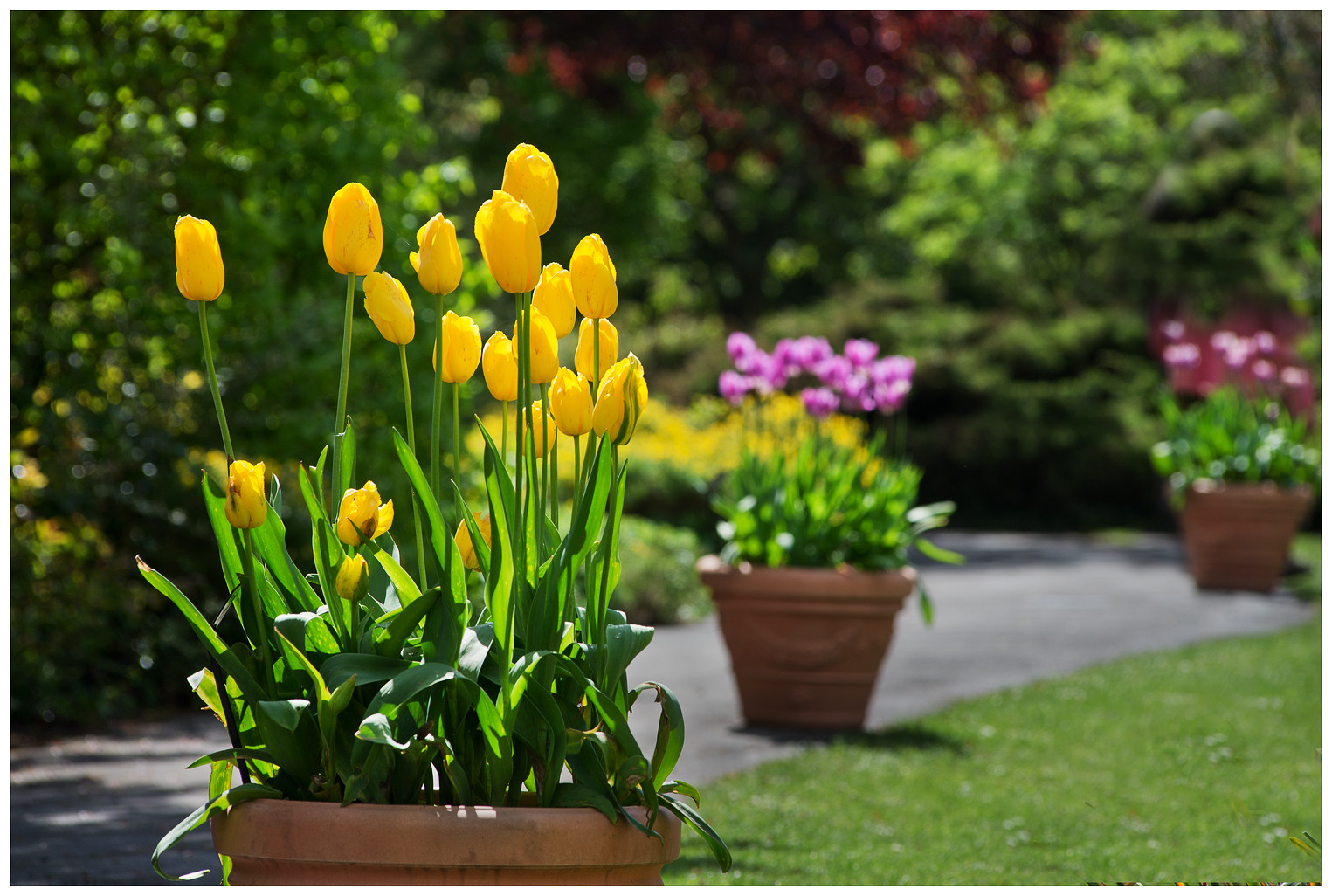In fall, gardeners settle bulbs under a blanket of soil and wait for spring to watch them flaunt their beauty.
“It’s easy to create a stunning display that bursts into bloom in the spring or early summer,” said Heather Stoven, an Oregon State University Extension horticulturist. “But bulbs don’t have to be in the ground to be effective. A pot works just as well.”
In fact, bulbs often do better in pots than in the ground because pots provide better drainage, critical for their long-term survival. Also, gophers and other underground creatures will be foiled since they can’t find their juicy favorites, especially tulips.
Don’t be afraid to pack a pot full of bulbs, Stoven said. Plant bulbs at different, overlapping levels. You can easily put 20 to 30 bulbs, sometimes even more, into a pot that is 14 to 20 inches across. Use bulbs of many different sizes for an interesting display and longer seasonal appeal.
“Although you can put each kind of bulb in a different pot, mixing them up provides an extravagant display,” she said.
For longest bloom, look first for crocus. Tulips of all kinds work well. Some of Stoven’s favorites are the “species tulips” and their cultivars. Species tulips, often available in garden centers, are sometimes shorter than the taller bedding tulips and tend to come back year after year unlike the larger, more familiar tulips that fade away after the first couple of years.
Narcissus and daffodils also are stellar pot bulbs. Choose both early and later blooming varieties for continued bloom. The taller alliums also work well, but shorter alliums can sometimes take over. “I avoid grape hyacinth, which also tends to dominate,” Stoven said.
Branch out a bit, Stoven advises, and try brodiaea, hyacinths, fritillaria, dwarf iris or other bulbs. Dwarf iris, like tulips, often do better in pots than in the ground because of their high drainage requirements.
Plant bulbs with their tips pointing upward and, generally, follow directions for planting depth on the package. Use regular planting or potting soil, recently purchased if possible. “If you reuse older planting mix, be sure to add bulb fertilizer, and be advised of the risk of potential carryover of plant diseases, which can affect the health of your new bulbs,” Stoven advised.
“Fill the container a little more than halfway full of soil, then add a layer of large bulbs such as narcissus (daffodil). Leave only a little space between them; about half an inch is OK. Add more soil and plant the next larger bulb, such as tulip. Repeat adding soil and bulbs alternatively, placing the smallest bulbs like crocus at the top, covered with another inch of soil. Water well and place in a protected spot out of the rain.”
It is best to leave the pot outside so that the bulbs get a cold period, which stimulates growth and flowering. Be sure to bring the pot inside temporarily when temperatures dip below about 28-30 degrees overnight. Bigger pots are safer than smaller ones because it takes longer for the soil mass to freeze all the way through.
Once green spikes of foliage begin to poke through the soil make sure the plants get plenty of light. A good time to add fertilizer is when plants are blooming; preferably a slow-release type.
After the flowers have bloomed, leave the foliage to die back on its own. Then remove the bulbs and plant them in the garden in the fall, or simply leave them in the pot for the next year. The bulbs will remain dormant and need water only when the autumn cycle begins anew.
-30-
About OSU Extension: The Oregon State University Extension Service shares research-based knowledge with people and communities in Oregon’s 36 counties and the Confederated Tribes of Warm Springs. OSU Extension addresses issues that matter to urban and rural Oregonians. OSU Extension’s partnerships and programs contribute to a healthy, prosperous and sustainable future for Oregon.

